
TRC66-86 *** 1
0506-englisch
TRC 66 - 86
Lombardini Engine
LDW 1003
OPERATING AND
MAINTENANCE
INSTRUCTION MANUAL
Weber Maschinentechnik GmbH
P. O. Box 21 53
D-57329 Bad Laasphe-Rückershausen Germany
Phone +49 27 54 / 398-0
Fax +49 27 54 3 98-101 (Reception) and
++3 98-102 (Spare Parts)

TRC66-86 *** 2

TRC66-86 *** 3
Preface
These operating and maintenance instructions describe the safe operation of the TRC 66 and TRC 86 trench compactors.
Please read this operation manual and familiarize yourself with all details of your trench compactor before operating the
machine for the first time. Carefully follow all instructions and always carry out the described operations in the indicated
order.
In chapter 1, the trench compactor is briefly described to provide you with a good overview on the location of the individual
assembly groups and their functions. Chapter 2 describes how to put the trench compactor into and out of operation and
how to work with the machine. In chapter 3, you will find a survey on and a description of the required service work. Chapter
4 contains instructions for trouble shooting by the operator. Chapter 5 comprises the hydraulic and electric diagrams.
Chapter 6 describes how to preserve the trench compactor for an extended storage, e.g. during the winter season.
We placed a great emphasis on a user-friendly lay-out with clear pictorial and textual information. In the text, you will find
figures in brackets which point out to illustrations, whereby the first figure indicates the figure number and the second one
- separated by a slash - indicates the item number on the corresponding illustration.
Example 1: (2/1) means figure 2, item 1
Example 2: (2/3,6) means figure 2, item 3 and item 6
Example 3: (2/2...4) means figure 2, items 2 to 4
Important information for the operator and service personnel is highlighted by pictograms.
Indicates important information and hints which must be followed by the operator and service personnel.
Indicates working and operating methods requiring in addition the observance of all applicable environment
protection and waste disposal regulations.
Indicates working and operating methods which must be precisely followed in order to prevent the compactor
from being damaged or deteriorated.
Indicates working and operating methods which must be precisely followed in order to avert direct danger to
persons.
For further information, please contact your authorized WEBER distributor or one of the addresses on the last page.

TRC66-86 *** 4
General Safety Instructions
Designated Use
Trench compactors are only allowed to be operated in accordance with their designated use, whereby the operating and
maintenance instructions, the directives*, the generally accepted safety and traffic rules and the regulations of the individual
countries of use must be followed.
The compactor has been exclusively designed for the compaction of:
- topsoil
- gravel
- crushed aggregates
- cohesive and heavy cohesive soil in earthwork and trench construction.
Any other use of the trench compactor is considered contrary to its designated use. The company operating the compactor
bears the sole responsibility for any misuse of the machine.
Improper Use
The trench compactor is not allowed to be used for transporting or towing loads. Passengers are not allowed to ride on
the trench compactor.
Operation with Radio Remote Control (Option)
Operating the machine by remote control is only allowed as long as the machine is completely in the operator's field of
vision. Remote control is forbidden if the machine comes out of sight. The personnel must have been or must be
instructed in the proper use of a machine operated by radio remote control.
Driving Permission
Only trustworthy persons, who are aged at least 18 years, are allowed to handle compactors. They must have been properly
trained in the operation and maintenance of the compactor by the employer or his authorized representative.
Protective Equipment
When operating the compactor described in this operation and maintenance manual, the noise level at the operator's ear may
exceed 90 dB(A). The German noise protection regulations (BGV-B3) require the operator to wear personal ear protectors
in case of noise levels of 90 dB(A) and more.
Additionally, a safety helmet and safety shoes belong to the protective equipment.
*) "Richtlinien für Straßenwalzen und Bodenverdichter" (Directives for road and soil compactors), published by the
"Berufsgenossenschaft" (German Employers' liability insurance association), order number ZH 1/530. Since Januar 1,
1995 replaced by DIN EN 500, available from Beuth Publishers.

TRC66-86 *** 5
Paragr. Title Page Paragr. Title Page
Table of Contents
2.9.2 Putting the Compactor out of
Operation, Remote Control ..................... 30
3 Maintenance ............................... 31
3.1 Safety Precautions for Maintenance
Work ............................................ 31
3.2 Maintenance Survey ............................. 32
3.2.1 Initial Maintenance.................................. 32
3.2.2 Routine Maintenance.............................. 33
3.3 Description of the Maintenance Work 35
3.3.1 Changing the Engine Oil ......................... 35
3.3.2 Replacing the Engine Oil Filter ............... 36
3.3.3 Cleaning/Replacing the Air Filter
Cartridge ................................................ 37
3.3.4 Replacing the Fuel Filter ......................... 38
3.3.5 Replacing the Hydraulic Oil Filter............ 39
3.3.6 Changing the Hydraulic Oil ..................... 40
3.3.7 Changing the Vibrator Oil ....................... 41
3.3.8 Checking and Retensioning the
Fan V-belt ............................................... 42
3.3.9 Replacing the Fan V-Belt ........................ 42
3.4 Consumables and Quantities .............. 43
4 Malfunctions During
Operation .................................... 44
4.1 General .................................................. 44
4.2 Trouble Shooting .................................. 45
4.3 Repair and Replacement Work ............ 46
4.3.1 Replacing the Battery ............................. 46
4.3.2 Checking/Replacing the Fuses ............... 47
4.3.3 Charging the Sender Accumulator
with the Charger ..................................... 48
4.3.3.1 Charging the Sender Accumulator on
the Machine ............................................ 49
4.3.3.2 Venting the Fuel Line .............................. 50
5 Diagrams .................................... 51
5.1 Electric Diagram ................................... 51
5.2 Hydraulic Diagram ................................ 53
6 Machine Preservation .............. 55
6.1 Preservation Measures ........................ 55
6.2 Removing Machine Preservatives ...... 56
7 Addresses, Weber
Maschinentechnik GmbH ......... 57
1 Technical Description................. 6
1.1 Illustration ............................................... 6
1.1.1 Overall View ............................................. 6
1.1.2 Controls and Indicators ............................ 8
1.1.3 Operating Elements of the Remote
Control ...................................................... 9
EC Declaration of Conformity for
Radio Remote Control ......................... 10
1.2 Machine Description ............................ 11
1.3 Specifications ....................................... 12
2 Operation.................................... 15
2.1 Safety Precautions for the Operation .15
2.2 Transport............................................... 16
2.2.1 Loading by Crane ................................... 16
2.3 Commissioning .................................... 17
2.4 Pre-Start Work ...................................... 17
2.4.1 Checking the Fuel Level ......................... 17
2.4.2 Checking the Engine Oil Level ................ 18
2.4.3 Checking the Coolant Level .................... 19
2.4.4 Checking the Hydraulic Oil Level ............ 20
2.4.5 Checking the Proper Function of
the Controls and Safety Devices ............ 20
2.4.5.1 Checking the Service Brake and the
Parking Brake ......................................... 20
2.4.5.2 Checking the Deadman Switch .............. 21
2.4.6 Checking the Charge of the
Remote Control Unit ............................... 21
2.4.7 Fitting the Remote Control Unit .............. 22
2.5 Starting, Manual Operation .................. 24
2.6 Operation, Manual ................................ 25
2.6.1 High Speed Operation ............................ 25
2.6.2 Compacting ............................................ 25
2.6.3 Steering .................................................. 26
2.6.3.1 Turning a R. H.Curve.............................. 26
2.6.3.2 Turning a L. H. Curve ............................. 26
2.6.3.3 Turning a Narrow R. H. Curve ................ 26
2.6.3.4 Turning a Narrow L. H. Curve ................. 26
2.6.3.5 Turning on the Spot ................................ 26
2.6.4 Automatic Activation of Vibration ............ 27
2.6.5 Individual Activation of Vibration ............. 27
2.7 Starting the Compactor by
Remote Control .................................... 28
2.8 Operation .............................................. 29
2.8.1 Remote Controlled Operation ................. 29
2.8.1.2 Steering .................................................. 29
2.9 Putting the Compactor out of
Operation .............................................. 30
2.9.1 Putting the Compactor out of Operation,
Manual Operation ................................... 30

TRC66-86 *** 6
1 Technical Description
Figure 1
1.1 Illustration
1.1.1 Overall View
3
4
1
5
2
1 Drums, R. H.
2 Vibrator
3 Tie-down lug, front
4 Water cooler/hydraulic oil cooler
5 Engine hood

TRC66-86 *** 7
Figure 2
10
98
7
1
2
4
5
3
6
1 Hydraulic oil tank
2 Drums, L. H.
3 Scraper
4 Hydraulic motors, rear (not shown)
5 Tie-down lug
6 Diesel engine (not shown)
7 Control panel
8 Hydraulic oil filter
9 Lifting lug
10 Anti-vandalism flap
11 Hydraulic motor, vibration
12 Deadman handle
11
10
12

TRC66-86 *** 8
Figure 3
1.1.2 Controls and Indicators
7
45
1
368
9
1
10
2
1 Anti-vandalism flap
2 Emergency stop switch
3 Switch, vibration
4 Switch, working speed/start
5 Switch - manual operation/remote controlled operation
6 Hood unlocking lever
7 Pilot lamp, glow system
8 Engine speed adjustment (idling, full speed)
9 Electrical module
10 Drive levers, manual operation
11 Function control lamp
12 Alternator charge warning light
13 Low engine oil pressure indicator light
14 Temperature pilot lamp
15 Air filter service indicator light
16 Hourmeter
17 Ignition key
18 Ignition lock
18
17
16
15
14
13
12
11

TRC66-86 *** 9
1.1.3 Operating Elements of the Remote Control
Figure 4
7
4
5
3
6
8
1 2
1 Joystick, propulsion L. H.
2 Joystick, propulsion R. H. / Start
3 Light-emitting diode, function pilot lamp
4 Light-emitting diode, accumulator charge
5 Socket, charging cable
6 Push button - full speed/idling
7 Switch, engine start/stop
8 Switch, high-speed range/vibration
Figure 5
Figure 6
1
1
1 Receiver, radio remote control 1 Charger

TRC66-86 *** 10
(Translation)
EC Declaration of Conformity for Radio Remote Control
We herewith declare that the following device
FA-9
is in compliance with the essential protection requirements of the Council Directive 89/336/EC on the approximation of
the laws of the Member States relating to electromagnetic compatibility (EMC) (89/336/EEC).
This declaration applies to all items produced.
The standard relevant for the evaluation of the electromagnetic compatibility is as follows:
R&TTE Directive 1999/5/EC
of 09 March 1999
This declaration is made under our responsibility for Terra Fernwirktechnik GmbH
signed "Jürgen Weher" and "Armin Muth"
Dautphetal, October 25, 2003
Terra Fernwirktechnik GmbH
Kirchstraße 1
D-35232 Dautphetal
Tel. ++49 6468-7070
Fax ++49 6468-7299

TRC66-86 *** 11
1.2 Machine Description
The trench compactors of the TRC 66 and TRC 86 series are used for the compaction of cohesive and heavy
cohesive soils being excavated on site and used again as backfill material.
Propulsion
The propulsion unit, a water-cooled Lombardini diesel engine, type LDW 1003, drives three gear pumps,
whereby one pump acts on the L.H. drums and the other on the R. H. drums. The third gear pump is provided
for the vibration drive. The hydraulic functions are controlled by means of a hydraulic control block, electric
switches and electric valves. Vibration is automatically or manually actuated by means of a direction
commutator. The hydraulic system also includes an hydraulic oil tank, an oil /water cooler, valves and tubes.
The multiple disc brake acts on the two rear drums. The engine is started via the ignition lock or the remote
control unit. The engine speed (idling/full speed) is adjusted by means of the adjusting knob. The hourmeter
indicates the operating hours of the compactor. The scrapers are provided to prevent soil from sticking to the
drums.
Electrics
The three-phase alternator supplies the voltage for the 12 V electrical system and the battery. The alternator
charge warning light warns when the battery voltage is too low.
Operation
The TRC 66 andTRC 86 compactors are either operated by hand or by radio remote control.
Brake system
When the compactor is put out of operation, the multiple disc brake is automatically applied and acts as a parking
brake. As soon as the diesel engine starts, the brake is hydraulically released.
During operation, the hydrostatic drive acts as a service brake.
Remote control
The remote control unit consists of a sender, a receiver and a charger. The sender and the receiver are
programmed with addresses stored in the internal micro controller. Since each of these addresses is unique,
misorders from other units operating on the same frequency are avoided (radio signals from other units are not
accepted by the receiver). Two light-emitting diodes in the sender flash to indicate a correct order transmission
(green LED flashes) and monitor the accumulator charge (red LED flashes in case of undervoltage).

TRC66-86 *** 12
1.3 Specifications
TRC 66 TRC 86
Weight
Dead weight (in kg) 1340 1380
Operating weight CECE (in kg) 1350 1390
Average static linear load
(front/rear) (N/cm) 109 96
Dimensions
Overall length (in mm) 1845 1845
Overall width (in mm) 654 854
Height (in mm) 1165 1165
Width of one drum (in mm) 650 850
Drum diameter (in mm) 505 505
Drum base (in mm) 850 850
Lateral projection L.H./R.H. (in mm) - -
Propulsion
Engine manufacturer Lombardini Lombardini
Type LDW 1003 LDW 1003
Maximum output (in kW (HP))
according to DIN/ISO 70020 19.5/26.5 19.5/26.5
Type of combustion 4-stroke diesel 4-stroke diesel
Operating r.p.m.of engine 2600/1900 2600/1900
Cooling system water water
Propulsion, hydrostatic 4 drums 4 drums
Driving speed forward/reverse
(depending on soil conditions, in km/h)
Working speed range forward/reverse
(in km/h) 0 - 1.0 0 - 1.0
High speed range forward (in km/h) 0 - 2.7 0 - 2.7
Gradeability (depending on soil
conditions, in %) 50 50
Service brake hydrostatic
Parking brake mechanic, 2 drums

TRC66-86 *** 13
TRC 66 TRC 86
Vibration
System central eccentric outside of the drum
Type of drive hydraulic
Frequency (in Hz) 32/23 32/23
Centrifugal force (in kN) 75,2/45,2 75,5/45,5
Operation manual/
remote control
manual/
remote control
Noise and vibration measuring values*
Sound pressure level LPA
(at the operator's place, according to
2000/14/EC, in dB(A))
87 88
Sound power level LWA
(according to 2000/14/EC, in dB(A)) 103 103
Hand-arm vibration
(Weighted root mean square acceleration at
the handle, measured according to
2002/44/EC, Part 1 in m/s²)
forward 2.0
reverse 3.1
forward 2.0
reverse 3.1
*The noise values cited in this manual have been determined in accordance with
Directive 2000/14/EC. In operational use, values that deviates from these values can
occur depending on the prevailing operating conditions.

TRC66-86 *** 14
MADE IN ITALY
56
1 TYPE
.........................................
2 MACHINE NUMBER
..........................................
3 ENGINE TYPE
.........................................
4 ENGINE SERIAL NUMBER
........................................
Please fill in the following data of your trench compactor:
Rating Plate, Remote Control
1 Frequency
2 Serial No.
3. Sending Module BZT* approved
(* German Federal Office for Homologation in Telecommunications)
1
2
3
2
1

TRC66-86 *** 15
2 Operation
2.1 Safety Precautions for the Operation
Before every working shift, the operator of the compactor must check the operativeness of all controls and safety elements
as well as the proper installation of all protection devices. The compactor is only allowed to be operated with all protection
devices in place. The controls, safety devices and indicators must neither be affected in their functionality nor made
inoperative. When working with a remote control unit, the machine must be always in the operator's field of vision.
If defective safety devices or other failures which might affect the safe operation of the compactor are ascertained, the
supervisor must be informed without delay. In case of malfunctions endangering the unit's operational safety, the machine
must be turned off immediately.
Prior to any start of the compactor, the operator must take his personal noise protection measures. Before starting the
engine, the operator must also ensure that the compactor cannot slip out of control.
During the machine's operation, the operator has to constantly supervise the operational safety of the compactor. When
running the machine, the operator is not allowed to leave the operating controls of the compactor. In addition, he must
always have a sufficient visibility on the compactor's zone of operation.The operator must be assisted by a second person
if, because of the operating conditions, the visibility on the zone of operation is restricted.
When reversing, attention must be paid to the different conditions of trench work. Special care must be taken at the end of
the trench and when obstructions are encountered in order to prevent persons from getting crushed.
Trench compactors must be used and operated in a way ensuring their stability. The machine's stability is especially
endangered on slopes and brinks. Thus, keep clear of slopes and brinks.
When travelling on slopes, the operator must pay particular attention to his machine.The maximum gradeability of the
compactor must not be exceeded. On slopes, extreme precaution must be used and the compactor is not allowed to be abruptly
braked or accelerated.
Danger!
Moist and loose bases considerably reduce the compactor's adherence on slopes. Increased danger of accident!
Unevennesses such as kerbs are only allowed to be passed at working speed.
When working with vibration, check the consequences for buildings and underground pipes (gas, water, sewage,
electricity) in the environment.
Exhaust gases!
Never breathe exhaust fumes, they contain carbon monoxide, a colourless and odorless gas, which is extremely
dangerous and which can cause unconsciousness and death in just a few minutes. Never operate the engine in
closed premises or where ventilation is not sufficient (tunnels, caverns etc). Special care must be taken when the
engine is operated in the vicinity of persons or working animals.

TRC66-86 *** 16
2.2 Transport
Short distances on the job site can be covered by the
compactor under its own power in accordance with
paragraph 2.6.1.
For transporting the compactor over long distances,
the machine can be lifted on an appropriate transport
vehicle (truck, trailer) by means of a crane. In addition,
the compactor can be driven on a trailer suited for this
purpose.
Caution!
Do not exceed the maximum gradeability of
the machine when driving the compactor on
a trailer.
2.2.1 Loading by Crane
- Put the compactor out of operation, as
described in paragraph 2.9.
- Hang the crane hook (1/1) in the lifting lug
(1/2).
Danger!
Use a lifting tackle and a crane of a
sufficient lifting capacity only.
- Lift the compactor onto the transport vehicle.
- Fix an appropriate lashing tackle to the lashing
points (2/1) and properly fasten the compactor on
the trailer.
Caution!
Refer also to the operation manual of the
trailer manufacturer!
Danger!
Never transport the compactor when
unsecured!
Figure 1
Figure 2
1
2
1
1

TRC66-86 *** 17
2.3 Commissioning
Caution!
During the first 50 operating hours, the engine must be operated at 70 % of its maximum load only.
Commissioning requires normal pre-start work only.
Keep to the initial maintenance intervals (refer to paragraph 3.2.1).
2.4 Pre-Start Work
- Check the whole compactor for evident damage,
eliminate visual damage.
- Check all threaded connections for a tight fit, retighten
them if necessary.
- Check the fuel level, add fuel if necessary (refer to
paragraph 2.4.1).
- Check the engine oil level and add engine oil if necessary
(refer to paragraph 2.4.2).
- Check the hydraulic oil level and add hydraulic oil if
necessary (refer to paragraph 2.4.4).
- Check the coolant level in the compensation vessel and
add coolant if required (refer to paragraph 2.4.3).
- Check the proper function of the controls and safety
devices (refer to paragraph 2.4.5).
- Check the charge of the sender accumulator (2.4.6).
- Fit the remote control unit (2.4.7).
2.4.1 Checking the Fuel Level
- Put the compactor out of operation as described in
paragraph 2.9.
- Unlock the hood (3/1).
- Open the flap (3/2).
- Open the fuel tank cap (4/1) and add clean diesel fuel
(refer to paragraph 3.4 for quantity and specifications)
up to the bottom edge of the filler neck.
Danger !
Take care that fuel does not come in contact with
hot engine parts. Extinguish all open flames and
do not smoke while refueling.
Carefully wipe up any spilled fuel.
Firmly replace the filler cap (4/1).
- Close the flap (3/2).
- Lock the hood (3/1).
Figure 3
Figure 4
1
1
2

TRC66-86 *** 18
2.4.2 Checking the Engine Oil Level
Caution!
Always check the engine oil level with the
compactor in horizontal position.
- Open the hood lock (5/1).
- Open the hood lock flap (5/2).
Danger!
Risk of scalds because of hot engine parts!
- Pull out the oil dipstick (6/1), wipe the oil from the
dipstick with a clean, non-fluffing cloth and insert
the dipstick back into position.
- Pull out the oil dipstick once again.
The oil level must be between the "min" and the "max"
mark (refer to figure 7).
- If required, add engine oil through the oil filler neck
(8/1) (refer to paragraph 3.4 for quantity and
specifications).
Danger to the Environment!
Immediately wipe up any spilled fuel.
min max
Figure 5
Figure 6
Figure 7
Figure 8
1
2
1
1

TRC66-86 *** 19
2.4.3 Checking the Coolant Level
Danger!
Only check the coolant level with the engine
switched off and cooled down, otherwise risk
of scalds because of hot steam.
- Open the hood lock (9/1).
- Open the hood lock flap (9/2).
- Open the cover (10/1).
The coolant level is correct if the coolant is approx.
5cm beneath the upper edge of the filler neck. If
required, add coolant (refer to paragraph 3.4 for
specifications).
- Close the cover (10/1).
- Close the flap (9/2).
- Close the hood lock (9/1).
Figure 10
Figure 9
2
1
1

TRC66-86 *** 20
Figure 11
Figure 12
Figure 13
1
1
2.4.4 Checking the Hydraulic Oil Level
Caution!
Always check the hydraulic oil level with cold
hydraulic oil and the compactor in the horizontal
position.
- Unlock the dashboard (11/1) by pulling up the lock
(11/2).
- Fold up the dashboard (11/1) and turn it on the
engine console.
- Check the hydraulic oil level in the sight glass (12/1).
Caution!
The hydraulic oil level must be between the
center and the upper edge of the sight glass.
- If required, add hydraulic oil (refer to paragraph 3.4
for quantity and specifications).
- Check, and if required, eliminate any leaks identified.
2.4.5 Checking the Proper Function of
the Controls and Safety Devices
-Move the drive levers (13/1) to the vertical
position.
- Start the compactor (refer to paragraph 2.5).
- Actuate the drive levers (13/1) and check it for proper
functioning.
2.4.5.1 Checking the Service Brake and
the Parking Brake
- Start the compactor (refer to paragraph 2.5).
- Run the compactor (refer to paragraph 2.6).
- Let the compactor idle (release the drive levers (13/
1)).
Important!
The compactor is automatically braked by the
hydrostatic travel drive.
- Switch off the engine, the multiple disk brake acts as
a parking brake.
1
2
Page is loading ...
Page is loading ...
Page is loading ...
Page is loading ...
Page is loading ...
Page is loading ...
Page is loading ...
Page is loading ...
Page is loading ...
Page is loading ...
Page is loading ...
Page is loading ...
Page is loading ...
Page is loading ...
Page is loading ...
Page is loading ...
Page is loading ...
Page is loading ...
Page is loading ...
Page is loading ...
Page is loading ...
Page is loading ...
Page is loading ...
Page is loading ...
Page is loading ...
Page is loading ...
Page is loading ...
Page is loading ...
Page is loading ...
Page is loading ...
Page is loading ...
Page is loading ...
Page is loading ...
Page is loading ...
Page is loading ...
Page is loading ...
Page is loading ...
Page is loading ...
Page is loading ...
Page is loading ...
-
 1
1
-
 2
2
-
 3
3
-
 4
4
-
 5
5
-
 6
6
-
 7
7
-
 8
8
-
 9
9
-
 10
10
-
 11
11
-
 12
12
-
 13
13
-
 14
14
-
 15
15
-
 16
16
-
 17
17
-
 18
18
-
 19
19
-
 20
20
-
 21
21
-
 22
22
-
 23
23
-
 24
24
-
 25
25
-
 26
26
-
 27
27
-
 28
28
-
 29
29
-
 30
30
-
 31
31
-
 32
32
-
 33
33
-
 34
34
-
 35
35
-
 36
36
-
 37
37
-
 38
38
-
 39
39
-
 40
40
-
 41
41
-
 42
42
-
 43
43
-
 44
44
-
 45
45
-
 46
46
-
 47
47
-
 48
48
-
 49
49
-
 50
50
-
 51
51
-
 52
52
-
 53
53
-
 54
54
-
 55
55
-
 56
56
-
 57
57
-
 58
58
-
 59
59
-
 60
60
Weber mt TRC 66 / 86 Operating instructions
- Type
- Operating instructions
- This manual is also suitable for
Ask a question and I''ll find the answer in the document
Finding information in a document is now easier with AI
Related papers
-
Weber mt CR 1 R Operating instructions
-
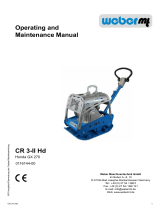 Weber mt CR 3-II Hd Operating And Maintenance Manual
Weber mt CR 3-II Hd Operating And Maintenance Manual
-
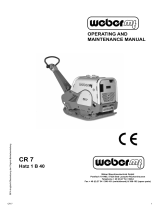 Weber mt CR 7-II Hd (-LE) Operating instructions
Weber mt CR 7-II Hd (-LE) Operating instructions
-
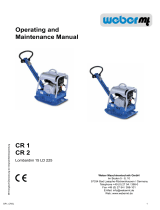 Weber mt CR 1 L Operating instructions
Weber mt CR 1 L Operating instructions
-
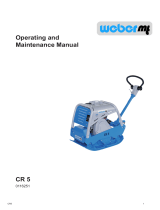 Weber mt CR 5 Hatz CR 5 E Operating instructions
Weber mt CR 5 Hatz CR 5 E Operating instructions
-
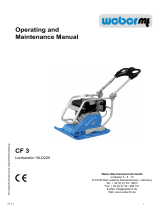 Weber mt CF 3 L Operating instructions
Weber mt CF 3 L Operating instructions
-
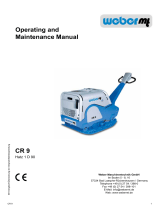 Weber mt CR 9 (CCD 2.0 / MDM) Operating instructions
Weber mt CR 9 (CCD 2.0 / MDM) Operating instructions
-
 Weber mt CR 9 CCD 2.0 Operating And Maintenance Manual
Weber mt CR 9 CCD 2.0 Operating And Maintenance Manual
-
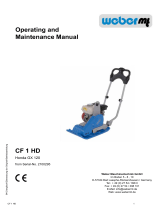 Weber mt CF 1 Hd / CF 1i Hd Operating instructions
Weber mt CF 1 Hd / CF 1i Hd Operating instructions
-
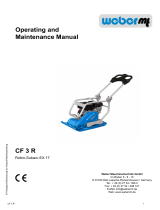 Weber mt CF 3 R Operating instructions
Weber mt CF 3 R Operating instructions
Other documents
-
Wacker Neuson RTK82-SC3 User manual
-
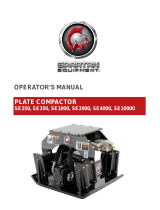 Spartan Equipment SE24501K-BLNK Owner's manual
Spartan Equipment SE24501K-BLNK Owner's manual
-
Wacker Neuson RTK82-SC3 User manual
-
Wacker Neuson RTK82-SC3 User manual
-
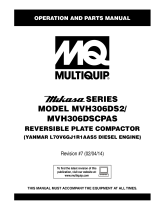 Multi Tech Equipment MVH306DS2 User manual
Multi Tech Equipment MVH306DS2 User manual
-
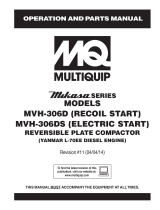 MULTIQUIP MVH-306D User manual
MULTIQUIP MVH-306D User manual
-
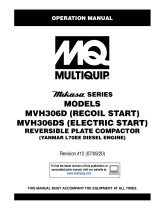 MQ Multiquip MVH306D-DS Operating instructions
MQ Multiquip MVH306D-DS Operating instructions
-
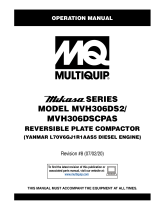 MQ Multiquip MVH306DS2-CPAS Operating instructions
MQ Multiquip MVH306DS2-CPAS Operating instructions
-
Wacker Neuson RD7H User manual
-
Wacker Neuson RD7H User manual









































































